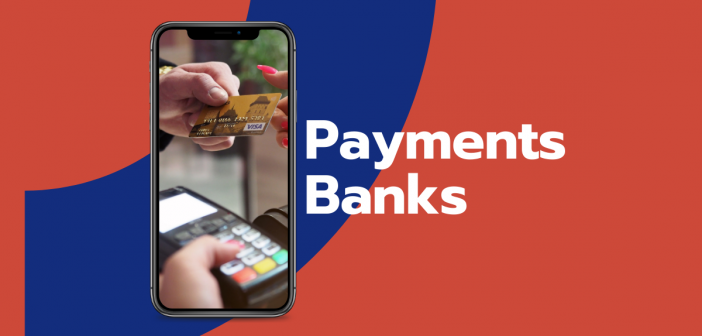Payment banks were introduced in India in 2014 with the aim of revolutionizing financial inclusion by providing banking services to underserved populations, especially in rural areas. While the concept was promising, these banks have struggled to gain significant traction and have fallen short of expectations. A closer examination reveals several reasons for their lagging performance and the steps needed to improve their presence.
Key Reasons for Lagging Behind
- Regulatory Constraints Payment banks face significant regulatory limitations that hamper their operations. Unlike full-fledged commercial banks, payment banks are not allowed to lend money or accept term deposits. They can only accept deposits up to ₹2 lakh per account, significantly limiting their ability to attract larger customers and high-value deposits. This narrow scope of services restricts their growth potential and makes it difficult for them to compete with traditional banks or new fintech players.
- Low Profit Margins The revenue model for payment banks is challenging. Since they are prohibited from offering loans—one of the most profitable banking products—they rely primarily on small transaction fees and interest from deposits placed with commercial banks or government securities. With a large percentage of their target audience being low-income individuals, transaction volumes are high, but the ticket size and profit margins are very low. This makes scaling up operations while maintaining profitability difficult.
- Lack of Trust and Awareness Many customers, especially in rural areas, still lack awareness of the services payment banks offer. Moreover, trust is a major issue. Despite digital payment methods gaining popularity, cash continues to dominate transactions in rural and semi-urban areas. A lack of understanding about digital banking solutions, coupled with fears of fraud, has slowed the adoption of payment bank services.
- Intense Competition from Fintech and UPI The rapid growth of fintech companies and the widespread adoption of the Unified Payments Interface (UPI) have overshadowed payment banks. UPI, in particular, allows seamless peer-to-peer and merchant payments across bank accounts without the need for a specialized payment bank account. This makes payment banks less appealing, especially when major commercial banks and digital wallets like Paytm and PhonePe are offering similar services with broader features.
- Limited Revenue Streams Payment banks have limited revenue sources compared to traditional banks, which can generate income from lending, investment services, and more. Payment banks primarily earn through remittance services, transaction fees, and deposits placed in government securities. This limits their ability to scale profitability, particularly when competing with commercial banks that can provide a wide range of financial products.
Steps to Bolster Presence
- Expanding Permitted Services Payment banks need a broader product portfolio to compete effectively. The Reserve Bank of India (RBI) could consider allowing these banks to offer microloans or partner with other institutions to provide limited lending services. This could increase their profitability and customer appeal. Additionally, expanding deposit limits beyond ₹2 lakh per customer would allow them to cater to higher-income clients and businesses.
- Enhancing Partnerships and Integrations Payment banks could strengthen partnerships with other financial institutions, fintech companies, and service providers to expand their range of services. Collaborations could help payment banks offer insurance products, investment services, and micro-credit through third-party platforms. Leveraging UPI more effectively, by becoming major payment aggregators, could also drive customer engagement.
- Improving Customer Education and Trust Building customer trust and awareness through financial literacy programs, especially in rural areas, is essential. Payment banks must invest in campaigns to educate customers about the security and benefits of digital banking. Offering incentives such as zero transaction fees for the first few months or cashback for using digital payments could encourage more users to sign up.
- Leveraging Technology and Data Analytics Payment banks can utilize data analytics to personalize services for their customers, offering tailored solutions based on spending habits and financial needs. By leveraging technology such as artificial intelligence (AI) and machine learning (ML), they can streamline their operations, reduce costs, and improve customer experiences.
- Targeting Niche Markets Instead of competing directly with commercial banks or fintechs in urban areas, payment banks should focus on specific underserved markets where their services can have a unique impact. These include remote rural areas, migrant laborers, and small businesses that need affordable and accessible financial solutions.
Conclusion
Payment banks in India have faced numerous obstacles in scaling their operations, from restrictive regulations to fierce competition. However, with strategic changes in the regulatory framework, stronger partnerships, enhanced customer trust, and greater use of technology, these banks have the potential to become powerful players in the Indian banking ecosystem, particularly in areas of financial inclusion and rural banking.





